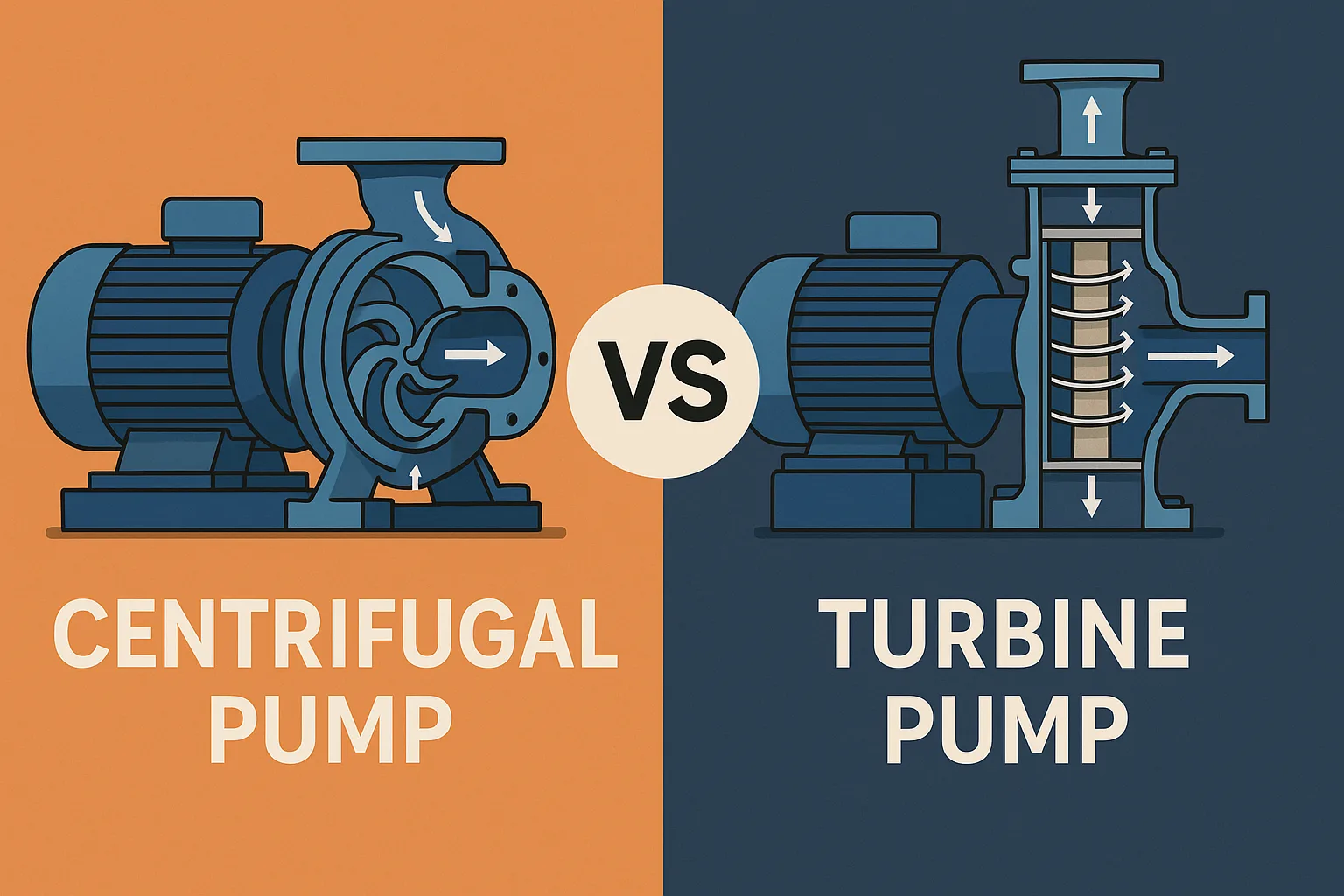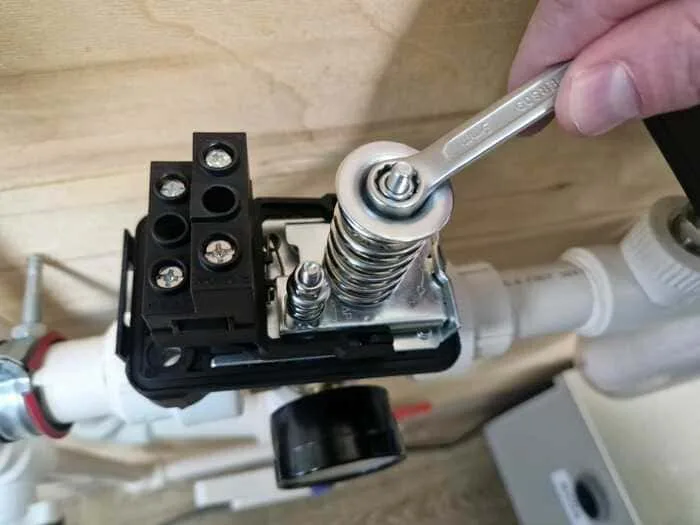What You Need to Know About Swimming Pool Pumps
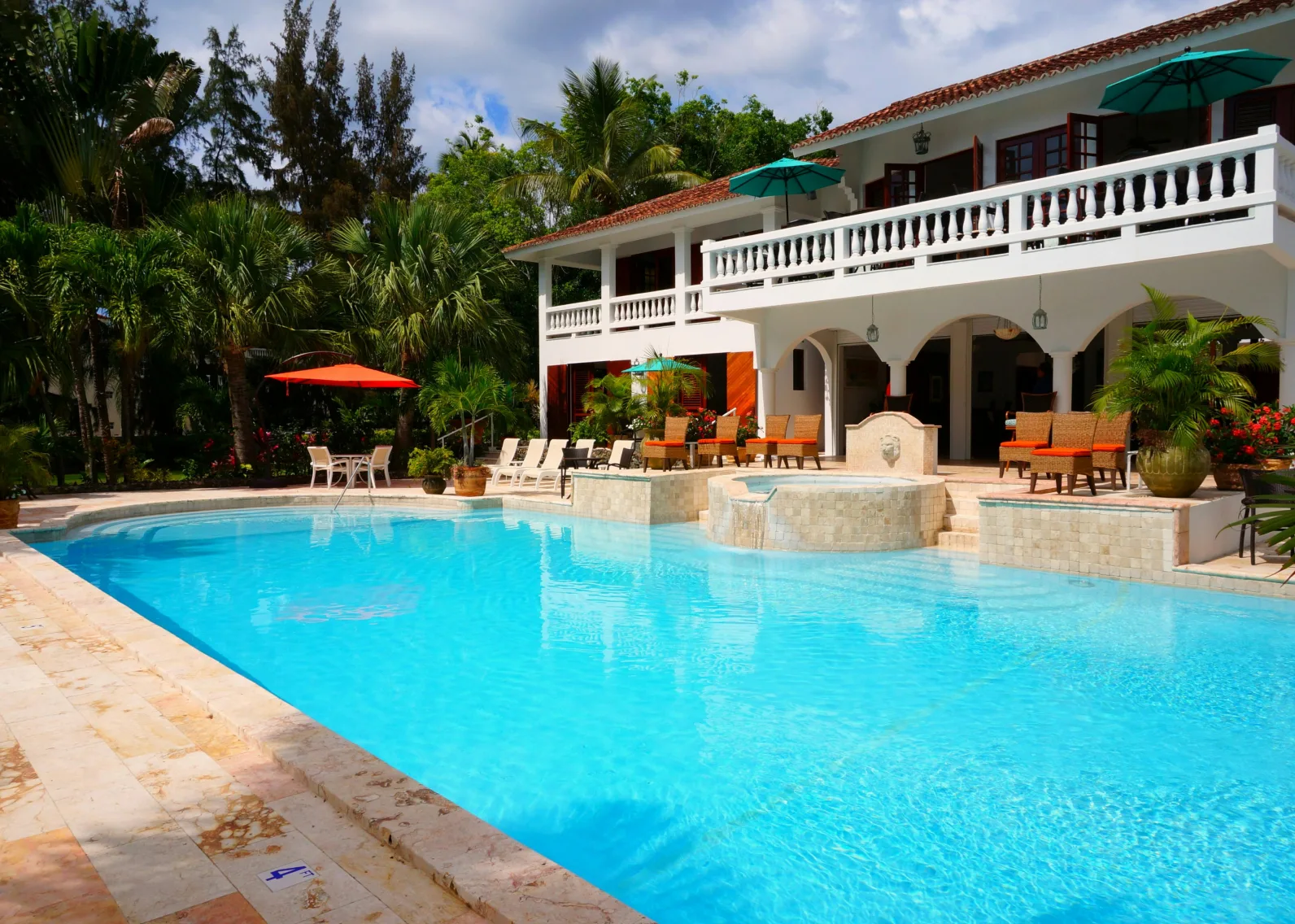
Every pool owner knows that a pool pump is a must-have for keeping your swimming pool running smoothly. This handy device keeps the water moving, filters out the nasties, and evenly spreads the chemicals needed to keep the pool clean and safe.
A good swimming pool pump ensures the water stays fresh and balanced, giving you a safe and enjoyable swimming experience.
In this article, we’ll discover the key features of pool pumps, the pros and cons of different models, plus some top tips for maintenance and troubleshooting.
The Primary Functions of a Swimming Pool Pump
A good swimming pool pump takes care of the essential tasks for your pool, making sure the water flows efficiently and lasts a long time. Unlike pond pumps that move water, pool pumps also prevent stagnation, stop bacteria from growing, and keep the water clean and hygienic.
The filters in these systems need to quickly and reliably remove dirt from the water and evenly spread the right chemicals to maintain the proper pH levels and other water conditions for swimming. Let’s check out the basic pool pump functions:
Water Circulation: to keep the water flowing and circulating so there is no stagnation, algae, or mould building up;
Filtration Support: to clean the water by removing all kinds of dirt and debris;
Chemical Distribution: for keeping the water balanced, while spreading chemicals like chlorine and other disinfectants through the water.
How Does a Pool Pump Work?
So, how does a good swimming pool pump work? Despite being multifunctional, a pool pump’s operation is pretty straightforward. The basic way it works is almost the same across models from different brands.
Components of a Pool Pump
All the parts of a swimming pool pump work closely together to create a single, efficient system for filtering and circulating water.
- The motor. It drives all the other parts to keep the water flowing.
- The impeller. It creates the pressure needed to move water through the system.
- The strainer basket. It catches large debris before the water moves into the main filtration system.
- The pump housing. It holds all the internal components and keeps them safe from external damage.
- Seals and gaskets. They keep the connections watertight and extend the pump’s lifespan.
The Water Filtration Process
The secret to keeping your pool pump running smoothly for ages is knowing how its filtration system works. This know-how will also help you sort out any issues smartly if needed.
Stage 1: The pump pulls water from the pool through the suction ports or a vacuum valve. The impeller creates negative pressure inside the pump, which draws the water in.
Stage 2: Pre-filtration through the strainer basket, where larger debris like leaves and dirt get caught.
Stage 3: Water gets cleaned in the main filtration system. The water passes through finer filter pores, removing smaller debris, bacteria, and other microorganisms.
Stage 4: The cleaned water flows back into the pool through return valves or jets with the necessary chemicals to meet hygiene and safety standards.
Stage 5: The filtration process keeps repeating (recirculation), ensuring constant water flow and cleaning.
Benefits of a Well-Functioning Pool Pump
A good pool pump makes your pool water crystal clear, helps your equipment last longer, and saves you money on chemicals and water by using them more efficiently. So, let’s check out the main benefits of getting a quality pool pump:
- Better water clarity and hygiene (system can reduce bacteria to safe levels 90% faster than cheap, low-efficiency pumps).
- Increased lifespan of pool equipment (a good pump that works properly reduces stress on other parts of your pool system).
- Cost savings through efficient chemical and water use ( Modern energy-efficient pumps can cut your power use by 30–50% compared to the old-school basic ones).
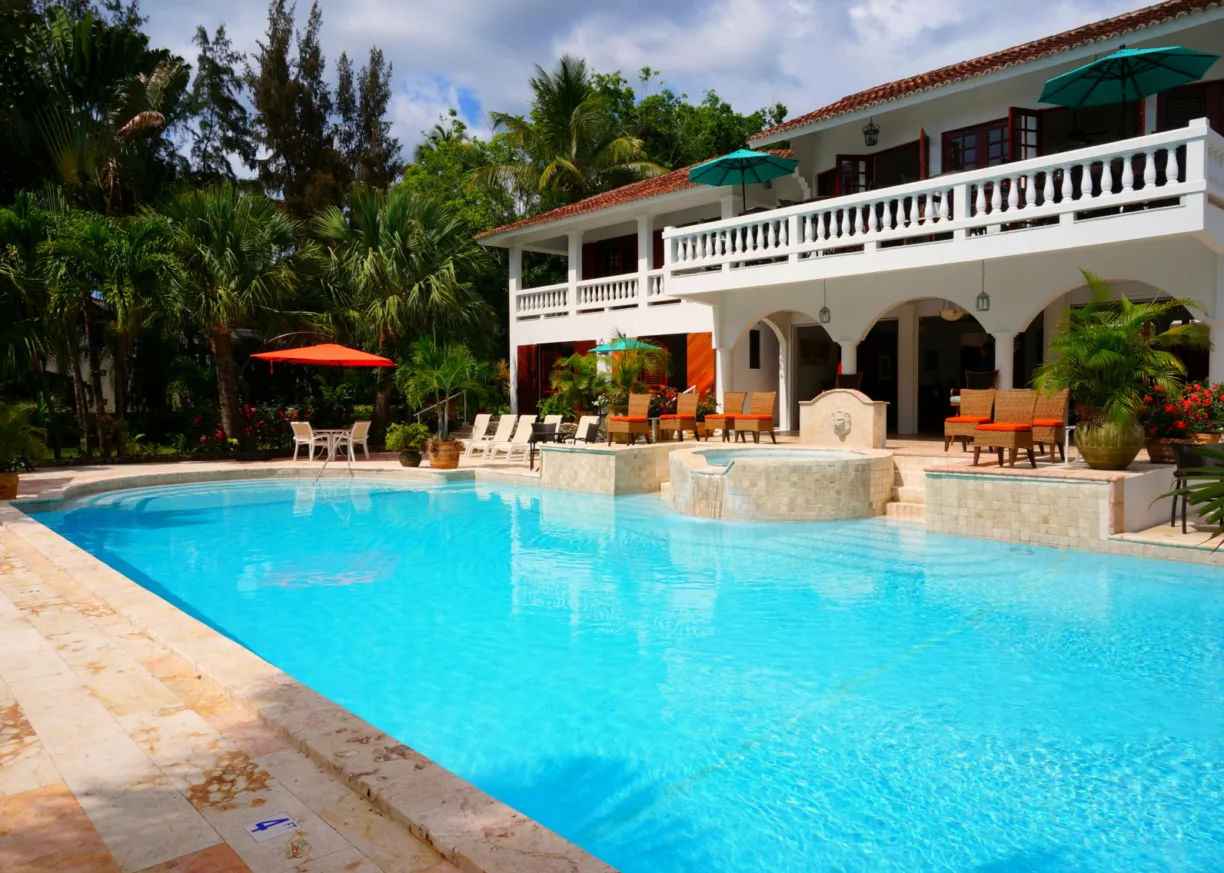
How to Choose the Right Pool Pump for Your Needs
Each pool project is unique, requiring careful consideration when selecting the right swimming pool pump. Let’s explore the key factors to keep in mind when choosing the perfect pump to suit your pool’s specific needs.
Key Considerations
How to choose a pool pump? Here are the key factors to consider:
Pool size and volume
Ensuring the pump’s capacity matches your pool’s requirements is essential for maintaining efficient and effective water circulation.
The recommended circulation rate is typically between 6 and 8 turnovers of the pool’s volume per day.
To calculate the necessary pump capacity, use the following formula:
Pool Volume (litres) × Circulation Rate (usually 6-8) ÷ 24 hours = Litres per hour.
For example, if your pool holds 50,000 litres and you’re aiming for 6 turnovers a day, the calculation would be: 50,000 litres × 6 ÷ 24 = 12,500 litres per hour.
Type of filtration system
Choosing a pump that aligns with your filtration setup is essential for maintaining crystal-clear water and optimal pool performance. Sand filters require high-performance pumps to effectively cleanse the water as it passes through the sand. In contrast, cartridge filters need medium-powered pumps since they provide excellent filtration with less resistance. Diatomaceous filters deliver an exceptionally high level of water purification, so it’s crucial to select high-performance pumps to maintain the necessary pressure.
Energy efficiency and cost
Look for energy-efficient pumps that meet standards such as Energy Star certification or similar, as they are designed to save on power without compromising performance. Such pumps can slash your electricity usage by 30-50% compared to traditional models. Investing in these pumps not only helps you save money in the long run but also supports a more sustainable and eco-friendly pool operation.
Variable-Speed vs. Single-Speed Pumps
Another key consideration is deciding between variable-speed pumps and single-speed pumps. Both types come with unique advantages and drawbacks based on the specific needs of your pool.
Variable-speed pool pump benefits are particularly appealing because they allow you to adjust their power output to match your pool’s current needs (energy savings of 30-50% compared to single-speed pumps) and operate at lower speeds, significantly reducing noise levels (a key advantage for pools located near residential areas or in quiet neighbourhoods). On the downside, these pumps come with a higher upfront cost. However, this initial investment is typically offset by savings during operation.
Single-speed pumps are generally more affordable upfront, making them an attractive option for pool owners on a tight budget. However, these swimming pool pumps come with significant drawbacks. They consume more energy since they always operate at maximum power, regardless of the pool’s needs.

Maintenance Tips for Your Pool Pump
Proper and timely maintenance of your pool pump is essential for its efficient and long-lasting performance. Regular checks and care can help you avoid the most common issues and minimise drops.
Regular Cleaning
Regular pool pump cleaning, replacing filters, and checking the motor’s condition will help you avoid clogs and excessive strain. So, before each pool session, inspect the filter basket for large debris like leaves, twigs, and other rubbish. Regularly clean your filters, always monitor the condition of the filter elements, and replace them as per the manufacturer’s recommendations.
Common Issues and Fixes
Even with regular maintenance, pool pumps can still encounter various issues. Knowing the common faults and how to fix them can help you quickly identify the problem and restore efficient pool pump operation.
Leaks
Causes: Worn seals and gaskets; cracks in the pump housing or pipes; improper installation of connections.
Solutions: Regularly inspect and replace seals and gaskets as recommended by the manufacturer; check the pump housing for cracks ( if damage is found, consult a professional for repair or replacement); ensure all pipe connections are securely fastened and watertight (if needed, tighten connections or apply sealants to prevent leaks).
Noise Issues
Causes: Improper pump installation; worn bearings; damaged impeller; blockages in the filter or pipework.
Solutions: Ensure the pump is installed on a flat surface and does not vibrate during operation; use rubber pads or mounts to reduce noise and vibration; inspect the impeller for damage or wear (replace it or the bearings as per the manufacturer’s instructions if needed); regularly clean the filters to remove debris and ensure smooth water flow.
Motor Issues
Causes: Overheating due to insufficient water circulation; electrical faults or overloads; mechanical wear of internal components.
Solutions: Ensure the pump operates with adequate water circulation and is not overloaded; regularly clean filters and inspect the system for blockages; check cables and connections for signs of damage or wear (if electrical issues are identified, consult a qualified electrician for diagnosis and repairs); check the workflow (if the motor shows signs of wear or unstable performance, seek professional assistance for repair or replacement).
Prolonging Pump Lifespan
To extend the lifespan of your pool pump, follow these straightforward maintenance tips and operational guidelines:
- Conduct regular inspections and servicing in line with the manufacturer’s instructions.
- Invest in high-quality filters that effectively remove debris and reduce strain on the pump.
- Install the pump according to the manufacturer’s recommendations, avoiding extreme conditions or improper installation (seek professional assistance if needed).
- Do not exceed the recommended loads and ensure the pump operates within its intended parameters.
- Maintain the optimal pH level and chemical balance of the water to prevent corrosion and wear on the pump’s internal components.
- Use anti-vibration pads or mounts to reduce noise and vibration, helping to prevent wear and tear on pump components.
- Install protective covers to keep debris and dirt from entering the pump from the surrounding environment.
- Turn off the pump when the pool is not in use for extended periods to conserve energy and minimise unnecessary wear.
FAQs About Swimming Pool Pumps
How can I tell if my pump is malfunctioning?
If you notice reduced performance, unusual noises, excessive vibrations, water leaks, overheating of the motor, or any other irregularities, inspect the pump. If the issue persists, consult a professional for further assessment and repairs.
Can I use a smaller pump for my pool?
Using a pump with insufficient capacity can result in inadequate water circulation and filtration, leading to poorer water quality and an increased risk of bacteria and algae growth. It can also overload the motor, potentially causing it to wear out prematurely.
How important is pump speed for water circulation?
The pump’s speed directly impacts the efficiency of water circulation and filtration. Variable-speed pumps offer the flexibility to adjust the water flow to suit your needs, providing an optimal balance between performance and energy consumption.
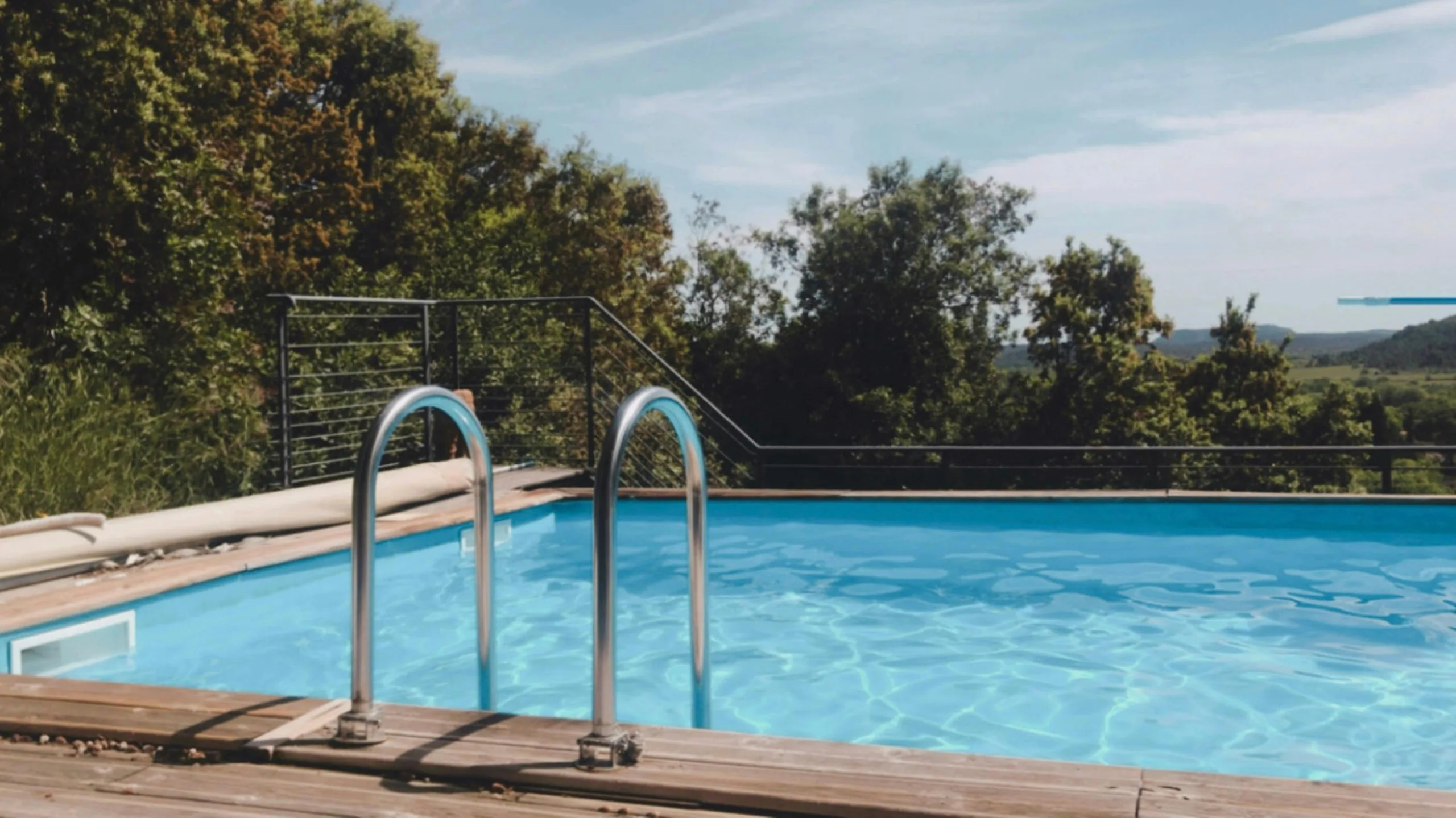
Final Thoughts on Pool Pumps
Choosing a high-quality swimming pool pump and ensuring its regular maintenance will extend the lifespan of your equipment, save money, and provide a more enjoyable and comfortable pool experience.
Consider modern solutions and prioritise the proper selection and maintenance to enjoy all the good pool pump benefits: clean and safe water all year round.
We also recommend reading the article about what a submersible pump is, which will be valuable for visitors looking for reliable water supply solutions for homes or industrial sites or those seeking efficient and quick water removal options.
Articles you may be interested in
